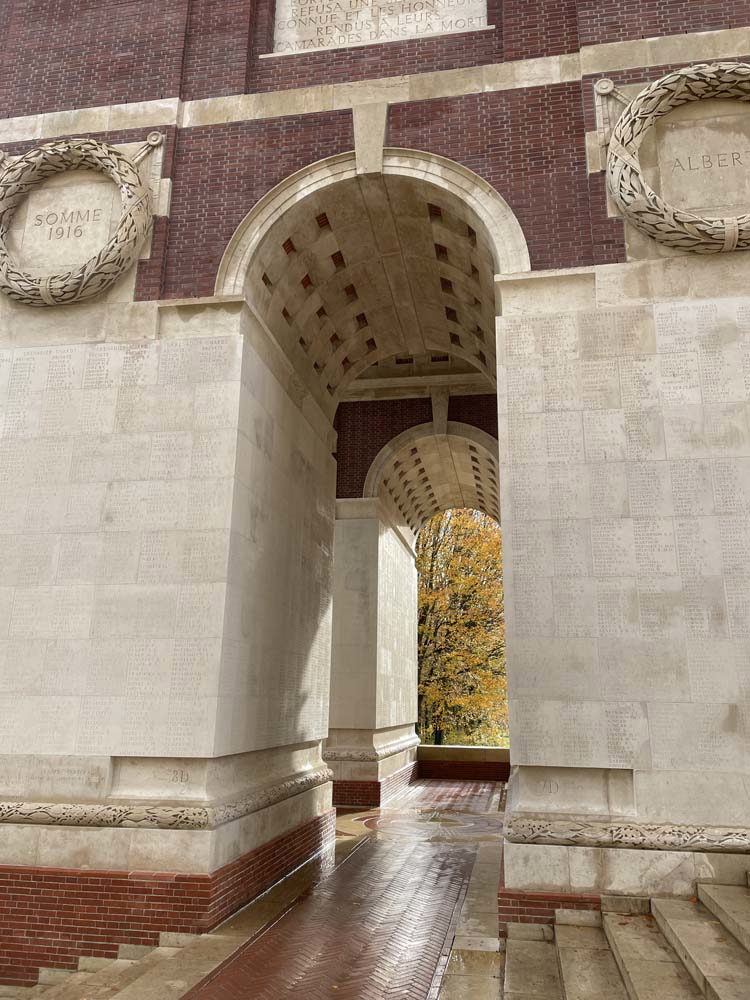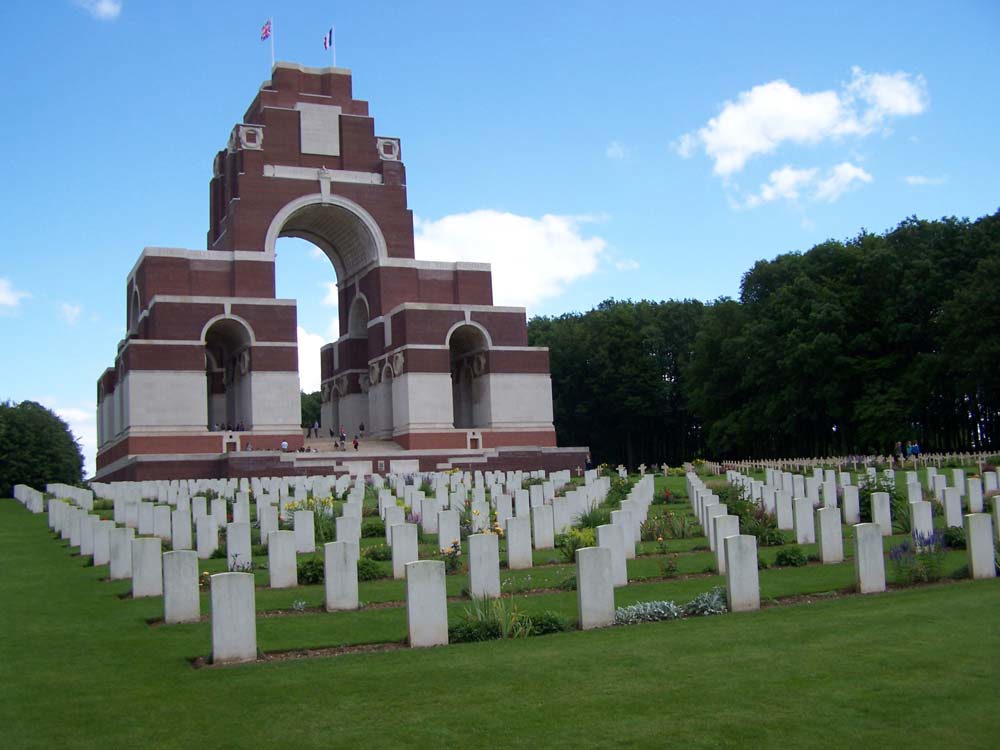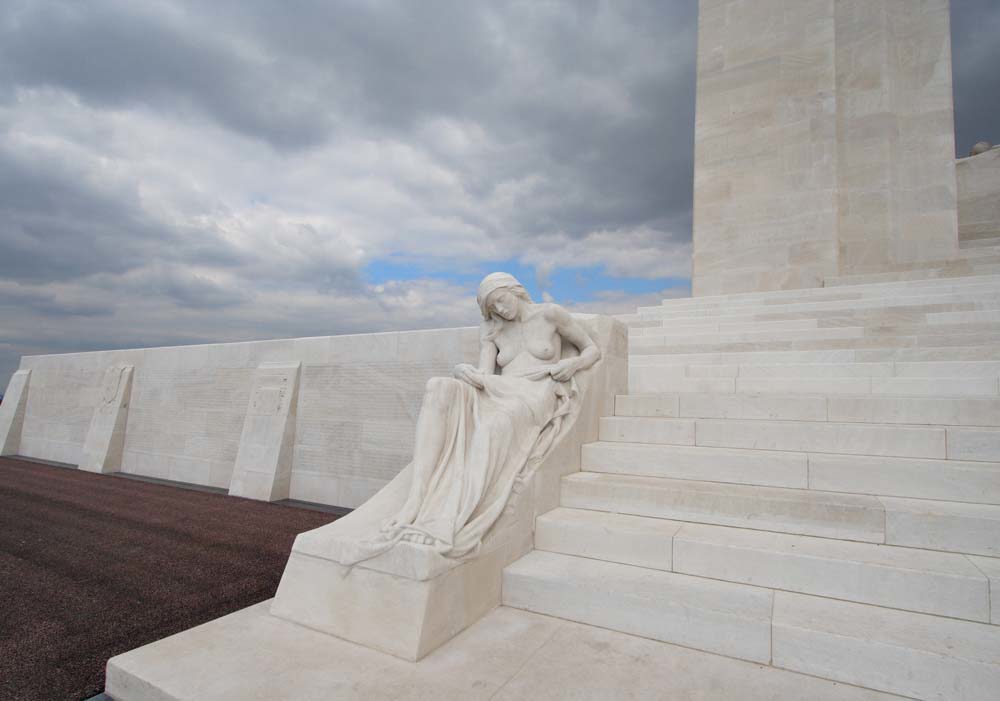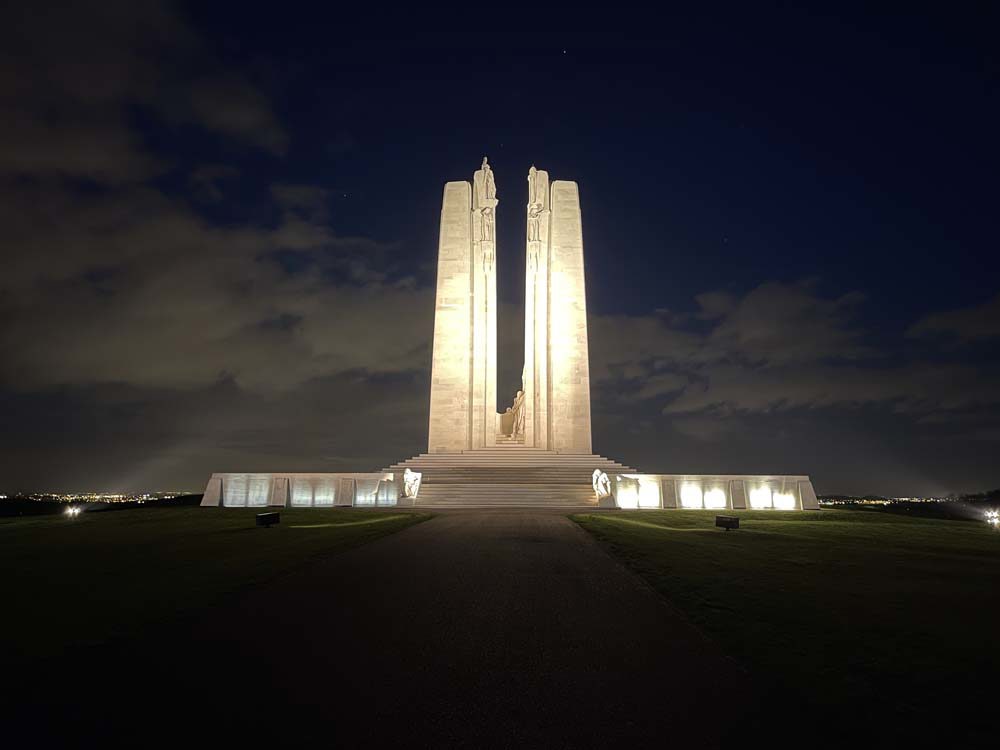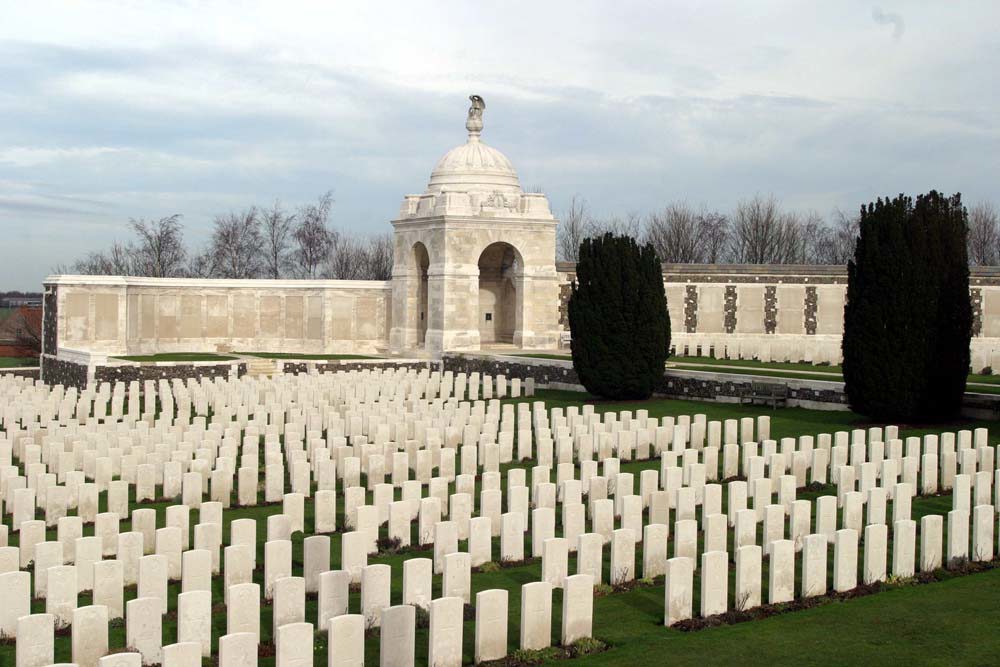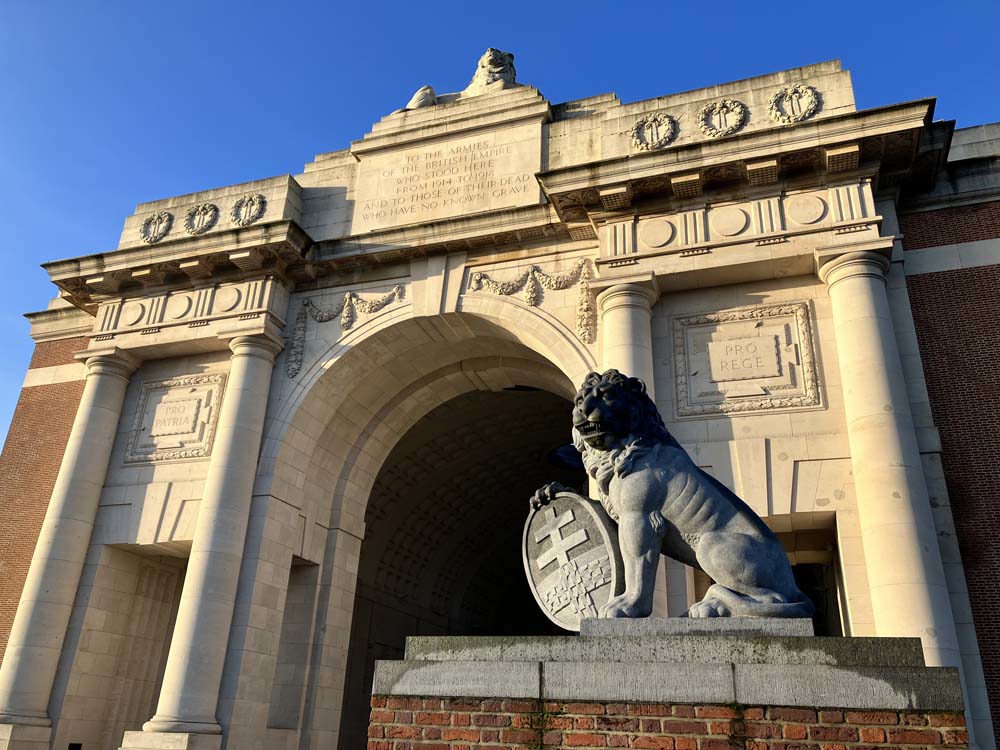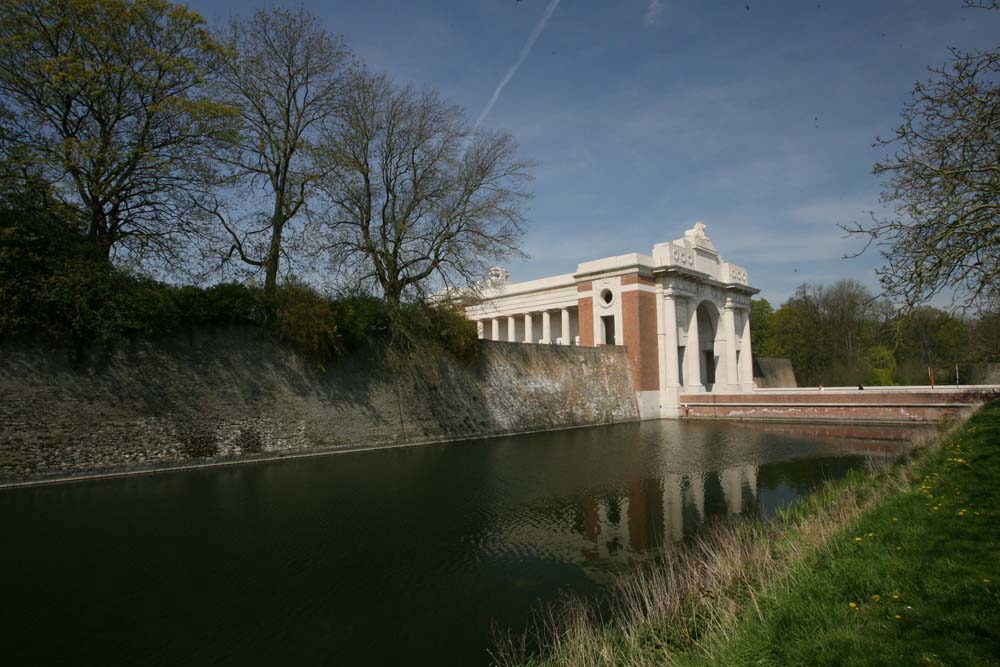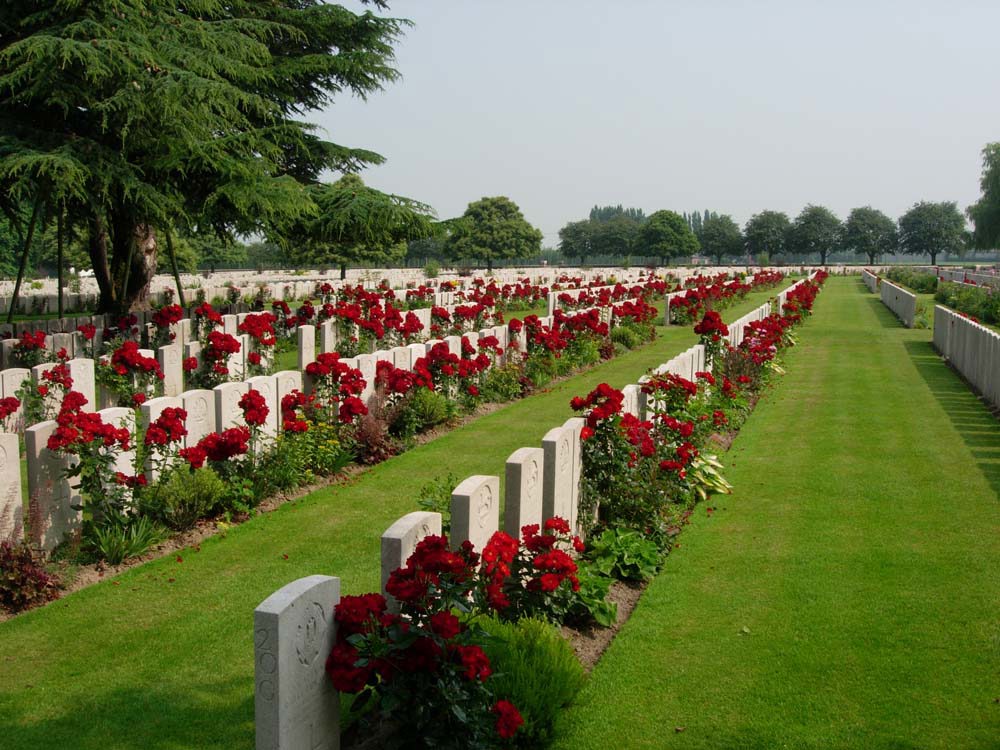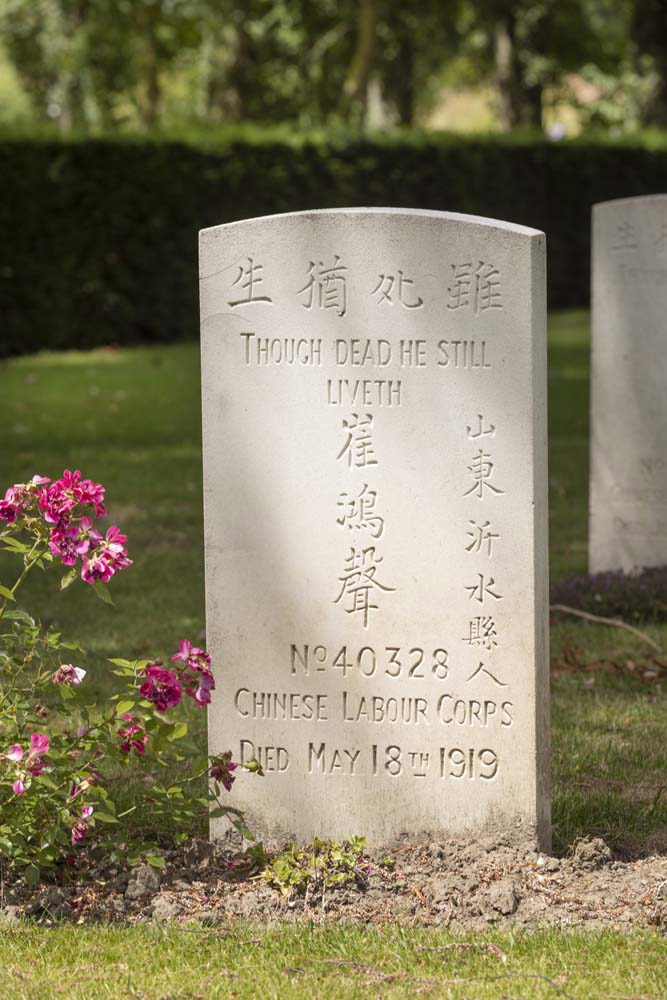15 April 2024
Exploring the connection between Commonwealth War Graves & UNESCO
Commonwealth War Graves & UNESCO
51 sites in France & Belgium
In September 2023, UNESCO awarded 139 war cemeteries and memorials were inscribed with UNESCO World Heritage status.
Some of the sites are cared for by other organisations, such as the French Ministère des Pensions, Germany’s Volksbund Deutsche Kriegsgräberfürsorge, and the American Battle Monuments Commission.
51 of the sites listed for UNESCO World Heritage status are Commonwealth War Graves Commission sites or cared for by us on behalf of other nations, such as the Vimy Canadian Memorial.
What does UNESCO World Heritage Status mean?
 UNESCO World Heritage status is given to cultural or natural places around the world considered to be of “outstanding universal value”.
UNESCO World Heritage status is given to cultural or natural places around the world considered to be of “outstanding universal value”.
To qualify for World Heritage Status, a place or building/s is thought to:
- Have special importance for everyone
- Represent unique, the most significant, or the best examples of the world’s cultural and/or natural heritage
World Heritage status is a significant award. By inscribing a place or building on the World Heritage list, it confirms its status as a culturally and historically significant site with universal appeal.
In this specific context, the 139 locations chosen by UNESCO in September are part of a wider initiative to promote and preserve the Funeral & Memorial Sites of the First World War (Western Front).
Which Commonwealth War Graves cemeteries and memorials were granted UNESCO World Heritage status?
The full list of Funeral Sites of the First World War granted UNESCO World Heritage status is below:
| 1st D.C.L.I. Cemetery, The Bluff | French National Necropolis of La Fontenelle | Louverval Military Cemetery & Cambrai Memorial |
| Aisne-Marne American Cemetery and Memorial | French National Necropolis of La Forestière | Menin Gate Memorial |
| Apremont German War Cemetery | French National Necropolis of La Harazée | Meuse-Argonne American Cemetery and Memorial |
| Australian National Memorial Villers-Bretonneux Memorial & Villers-Bretonneux Military Cemetery | French National Necropolis of Lagarde | Military cemetery & Russian chapel of Saint-Hilaire-le-Grand |
| Bayonet trench | French National Necropolis of Le Sourd & German Military Cemetery of Le Sourd | Military squares of Robermont |
| Beaumont Hamel (Newfoundland) Memorial & 29th Division Memorial, Commonwealth Memorial Park Beaumont Hamel (Newfoundland) Memorial Park & Hunter's Cemetery | French National Necropolis of Les Tiges | Mill Road Cemetery |
| Bedford House Cemetery | French National Necropolis of Maize | Monument irlandais Island of Ireland Peace Tower |
| Belgian Military Cemetery in Oeren | French National Necropolis of Moosch | Monument national canadien The Brooding Soldier |
| Belgian Military Cemetery of Houthulst | French National Necropolis of Notre-Dame-de-Lorette | Mud Corner Cemetery |
| Berks Cemetery Extension and Ploegsteert Memorial to the Missing | French National Necropolis of Pierrepont | Neuville-Saint-Vaast Czechoslovak War Cemetery |
| Braine Danish Military Cemetery | French National Necropolis of Prisoners of Effry | Nieuport Memorial |
| Buff's Road Cemetery | French National Necropolis of Riche | No Man's Cot Cemetery |
| Buttes New British Cemetery | French National Necropolis of Saint-Thomas en Argonne and French National Necropolis of the Gruerie Ossuary Monument | Noyelles-sur-mer Chinese Cemetery & Chinese Memorial |
| Canadian Cemetery No. 2 | French National Necropolis of Silberloch, French National Monument & Hartmannswillerkopf Crypt | Orée de la Forêt French Military Cemetery |
| Canadian National Vimy Memorial | French National Necropolis of the 28th Brigade La ferme des Wacques | Pierrepont German War Cemetery |
| Chestres German Military Cemetery and Chestres French National Necropolis | French National Necropolis of the Foreign Legion Monument-Ossuary (Henri Fansworth) | Plateau French Military Cemetery |
| Cimetière militaire du Commonwealth Larch Wood Cemetery | French National Necropolis of the Opera | Ploegsteert Wood Military Cemetery |
| Neuve-Chapelle Memorial | French National Necropolis of the Targette & La Targette British Cemetery | Polygon Wood Cemetery |
| Consenvoye German Military Cemetery | French National Necropolis of the Trottoir | Portuguese Military Cemetery of Richebourg-l'Avoué |
| Crypt of the Yser Tower | French National Necropolis of Thiescourt & Thiescourt German Military Cemetery | Pozières British Cemetery & Pozières Memorial |
| Dud Corner Cemetery and Loos Memorial | French National Necropolis of Wettstein | Prowse Point Military Cemetery |
| Enclosure of the executed in Tamines | French National Necropolis, German Military Cemetery & Polish Military Cemetery of Bois du Puits | Rancourt German War Cemetery |
| Essex farm cemetery | French National Prisoner-of-War Cemetery in Sarrebourg | Rancourt Military Cemetery |
| Etaples Military Cemetery | French ossuary monument of Haute-Chevauchée | Rifle House Cemetery |
| Faubourg D'Amiens Cemetery, Arras Memorial and Arras Flying Services Memorial | French Ossuary of Mount Kemmel | Romanian Military Cemetery in Soultzmatt |
| Fort du Loncin | French Ossuary of Navarin: monument to the dead of the Armies of Champagne | Saint-Quentin German War Cemetery & Saint-Quentin Franco-German Monument |
| Fort of Douaumont | French ossuary, French national necropolis, Israelite monument and Muslim monument of Douaumont | Saint-Symphorien German and Commonwealth Military Cemetery |
| Franco-German military cemetery of Radan | French square of civilian victims of Gerbeviller | Set of stelae and ancient German and French individual tombs of Petit Donon |
| French communal cemetery & French chapel of Mondement-Montgivroux | French stele of the executed of Fleury-devant-Douaumont | Solesmes Road German Military Cemetery & Cambrai East Military Cemetery |
| French Memorial Ghosts | Fromelles (Pheasant Wood) Military Cemetery | South Africa (Delville Wood) National Memorial and Delville Wood Cemetery |
| French Memorial of the Battles of the Marne | German monument in St. Charles Cemetery | Spanbroekmolen British Cemetery |
| French Military Cemetery Germania | Givenchy Road Canadian Cemetery | St. Mihiel American Cemetery and Memorial |
| French Military Cemetery Saint-Charles de Potyze | Gobessart German War Cemetery | Strand Military Cemetery |
| French military square of the dead of 11 November 1918 of Vrigne-Meuse | Hedge Row Trench Cemetery | Thiepval Memorial & Thiepval Anglo-French Cemetery |
| French National Necropolis & French Memorial Chapel of Rancourt | Hellenwald German War Cemetery | Toronto Avenue Cemetery |
| French National Necropolis & German Military Cemetery of Crouée | Hohrod-Bärenstall German War Cemetery | Track X Cemetery |
| French National Necropolis Duchesne | Hyde Park Corner Cemetery | Tyne Cot Cemetery and Memorial |
| French National Necropolis La Grande Tombe de Villeroy | Italian Military Cemetery de Bligny | Uhlans German Military Cemetery |
| French National Necropolis of Assevent & German Military Cemetery of Assevent | Kahm German War Cemetery | V.C. Corner Australian Cemetery and Memorial |
| French National Necropolis of Cerny-en-Laonnois, German Military Cemetery of Cerny-en-Laonnois and Memorial Chapel of the Chemin des Dames | La Belle Motte French Military Cemetery | Veslud German War Cemetery |
| French National Necropolis of Chambière | Lagarde German War Cemetery | Vladslo German War Cemetery |
| French National Necropolis of Compiègne (Royallieu) | Langemark German War Cemetery | Welsh Cemetery (Caesar's Nose) |
| French National Necropolis of Craonnelle | Le Quesnoy communal Cemetery extension | White House German Military Cemetery |
| French National Necropolis of Cuts | Lichfield Crater | Wimereux communal cemetery |
| French National Necropolis of Faubourg Pavé | Lijssenthoek military cemetery | Woods Cemetery |
| French National Necropolis of Hope | Lone Tree Cemetery | |
|
French National Necropolis of La Chipotte |
Louvencourt Military Cemetery |
Director General of the Commonwealth War Graves Commission, Claire Horton CBE, said: “We are thrilled that a significant number of our iconic cemeteries and memorials along the former Western Front have been awarded World Heritage Status.
“In recognising the Outstanding Universal Value of these places of memory – places that commemorate the sacrifice of those of many nations, faiths, and ethnicities – the proposal acknowledges CWGC’s century plus stewardship of all the cemeteries and memorials to a standard of excellence. World Heritage Status also recognises the global importance of these Silent Cities to the ongoing commemoration of the war dead.”
How did UNESCO select the First World War sites to inscribe with World Heritage Status?
After years of discussion, UNESCO selected these sites based on three of its specific inscription criteria.
- Establishment of a new way to commemorate war dead – For the first time in history, the dead of the First World War were commemorated by name. This practice, really pioneered by the Commonwealth War Graves Commission, has become the traditional way of remembrance and its sites in France & Belgium helped spearhead this.
- Unique architecture & landscaping – UNESCO believes these cemeteries and memorials hold unique and influential aesthetic qualities. The fact most of the sites listed are located close to or on former WW1 battlefields, coupled with the beautiful architecture and landscaping, make these sites culturally significant.
- Shared remembrance – Universal appeal is an essential criterion for UNESCO World Heritage status. The First World War drew in millions of participants from across the world. More than 130 nations are represented in casualties across the region’s war graves and memorials. Hundreds of thousands of tourists make the pilgrimage to visit them every year, reflecting how these sites are focal points for local and global commemoration.
What does UNESCO World Heritage status mean for Commonwealth War Graves Commission sites?
UNESCO sites are given specific conservation and maintenance protocols to follow.
However, these fall in line with how we care for our sites at the Commonwealth War Graves Commission.
Since our formation, Commonwealth War Graves has been charged with commemorating the war dead and maintaining our sites in perpetuity.
Our estate covers some 23,000 locations in over 150 countries. Our teams’ expertise in horticulture, stone masonry, carpentry, metalwork, and more important skills related to conservation and upkeep, is second to none.
Learn more about how we care for our sites here.
Get to know some of our UNESCO World Heritage status cemeteries & memorials
Thiepval Memorial
The Thiepval Memorial to the Missing of the Somme commemorates by name some 72,000 UK and South African officers and enlisted who died in the Somme sector before 20 March 1918 with no known grave.
Over 90% of those commemorated on Thiepval fell between July and November 1916.
The Battle of the Somme has entered folklore as one of the toughest, bloodiest campaigns fought by the British and Commonwealth troops during the First World War.
On 1 July 1916, thirteen Commonwealth divisions launched attacks throughout the Somme region. German defences were barely touched by the initial artillery bombardment. The Commonwealth units faced unexpectedly ferocious resistance.
The first day of the Battle of the Somme remains the British Army’s bloodiest single day. Over 57,000 men became casualties with around 16,000 killed. By the campaign’s end in November 1916, some 420,000 casualties were taken including just over 95,000 killed or missing.
The Thiepval Memorial was designed by Sir Edwin Lutyens. It was opened by the Prince of Wales and the President of France on 1 August 1932. Since then, Thiepval has grown to become one of the most iconic memorials maintained by the Commonwealth War Graves Commission.
Vimy Memorial
The Vimy Memorial is Canada’s national memorial to the dead of the First World War. Commonwealth War Graves maintains the memorial on behalf of the Canadian government.
With its towering icy white architecture, stretching into the French sky, Vimy is one of the most striking memorials in our care.
Carved weeping figures dot the memorial, showing the collective grief of Canada for its fallen sons. The names of over 11,000 missing Canadian Great War soldiers are carved onto the memorial’s name panels.
But Vimy’s commemorates so much more. For Canada, the memorial is also a symbol of all 60,000 Canadians who lost their lives during the Great War.
The site, with the memorial sitting atop a 60m high ridge, holds special significance for Canadian national identity too. It was here that in April 1917, all four Canadian divisions fought as one unit for the first time, storming the ridge and winning a major tactical victory, proof Canada could fight and win on its own.
Tyne Cot Cemetery
Tyne Cot Cemetery lies within the heart of the Ypres Salient: one of the most significant areas of the First World War.
Some of the most infamous episodes of the war were fought in and around Ypres. That’s why some of our largest war cemeteries and memorials are located there.
Tyne Cot Cemetery is the largest of all CWGC war cemeteries. Close to 12,000 Commonwealth soldiers are buried here. Such was the brutal nature of the fighting at the Ypres Salient, around 8,300 are unidentified casualties.
Tyne Cot gets its name from the rows of concrete German bunkhouses and pillboxes in the cemetery. The remains of these structures are still present in the cemetery today. The Cross of Sacrifice stands at the largest remaining bunkhouse, an architectural idea that came from the brain of King George V.
Within the grounds of the cemetery lies the Tyne Cot Memorial. Over 35,000 missing soldiers with no known war grave are commemorated on the memorial.
Ypres (Menin Gate) Memorial
The Ypres (Menin Gate) Memorial is one of four memorials to the missing located in the Ypres Salient.
The Salient was formed in 1914 during the First Battle of Ypres. A small section of the British Expeditionary Force captured the city, pushing out its German occupiers before the winter set in.
The Germans retreated to Passchendaele Ridge outside Ypres and stalemate set in, despite several major battles taking place throughout the war to break the deadlock.
Hundreds of thousands of men lost their lives during the Ypres Salient battles. It became clear following the war that several locations would be needed to properly commemorate the fallen.
The site of the Menin Gate was chosen as the Menin Road was one of the key routes men marched down to reach the Ypres Salient’s frontlines.
Over 54,500 officers and enlisted men are commemorated by the Menin Gate. Nations represented on its name panels include Australia, Canada, India, South Africa and the UK. New Zealand casualties are commemorated on memorials elsewhere around Flanders.
Lijssenthoek Military Cemetery
Lijssenthoek was situated close to the main Allied lines of communications around Ypres during the First World War.
The village’s location, close to the frontline but out of range of the heaviest artillery, made it the ideal place to set up casualty-clearing stations.
Lijssenthoek was first used by the French 15th Hospital D’Evacuation but by June 1915 it was being used for Commonwealth burials. The German Spring Offensive forced a retreat for the medical units, but the site remained in use for field hospitals until the end of the war.
Lijssenthoek Military Cemetery is the second-largest CWGC in terms of burials. Just shy of 10,000 Commonwealth war graves are located here. Just over 880 burials from other nationalities, mostly French and German, are buried here too.
Interestingly, a large number of Chinese labour corps burials can be found in Lijssenthoek, easily identifiable by the hanzi Chinese lettering carved into their headstones.
Discover more Commonwealth War Graves Sites
With over 23,000 war cemeteries and memorials around the world, you are bound to find a CWGC site near you.
Use our Find Cemeteries & Memorials tool to quickly discover our sites around the world.
Search by location, war and number of casualties to research and visit commemorative sites. We hope to see you at one of our sites soon.



